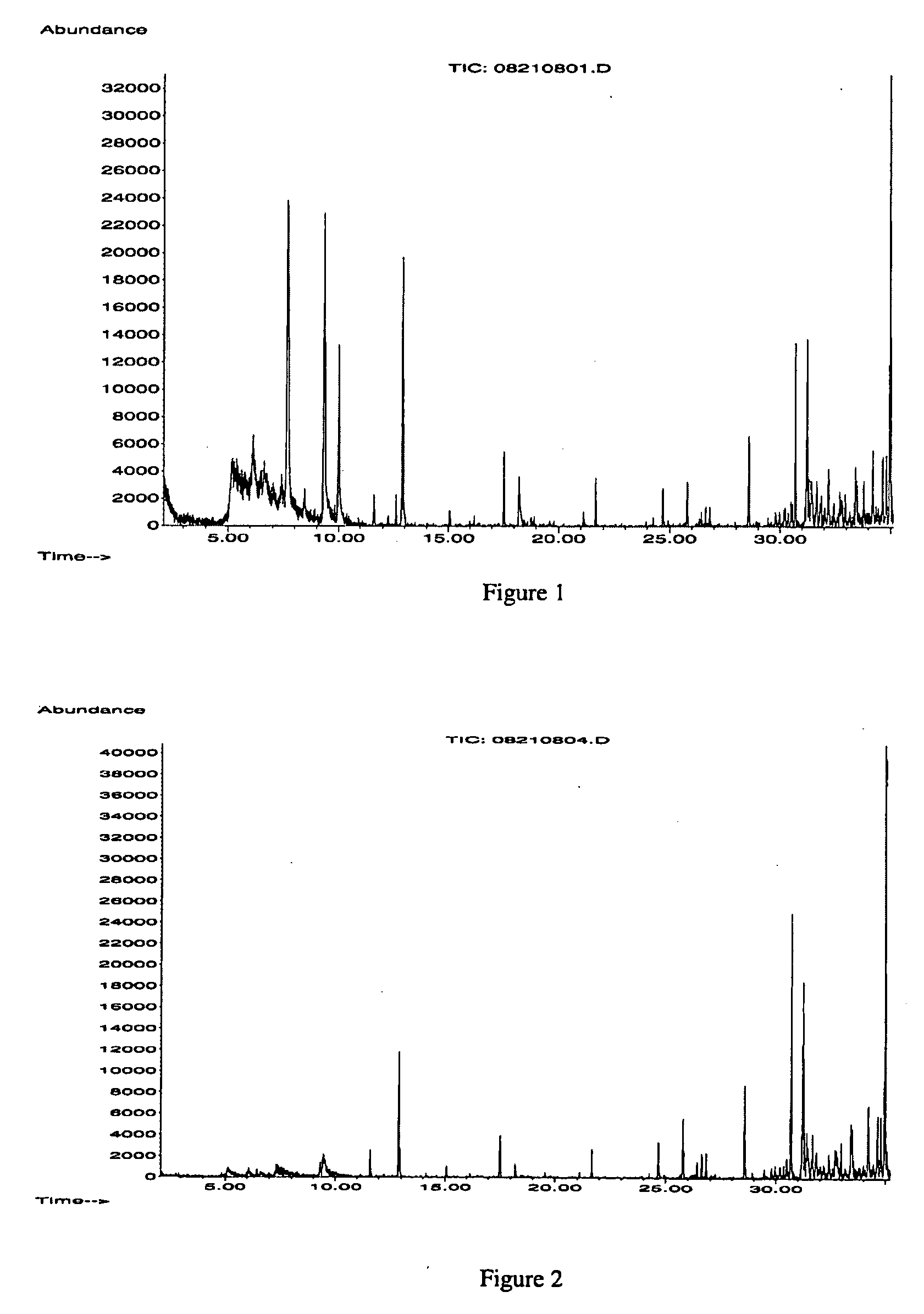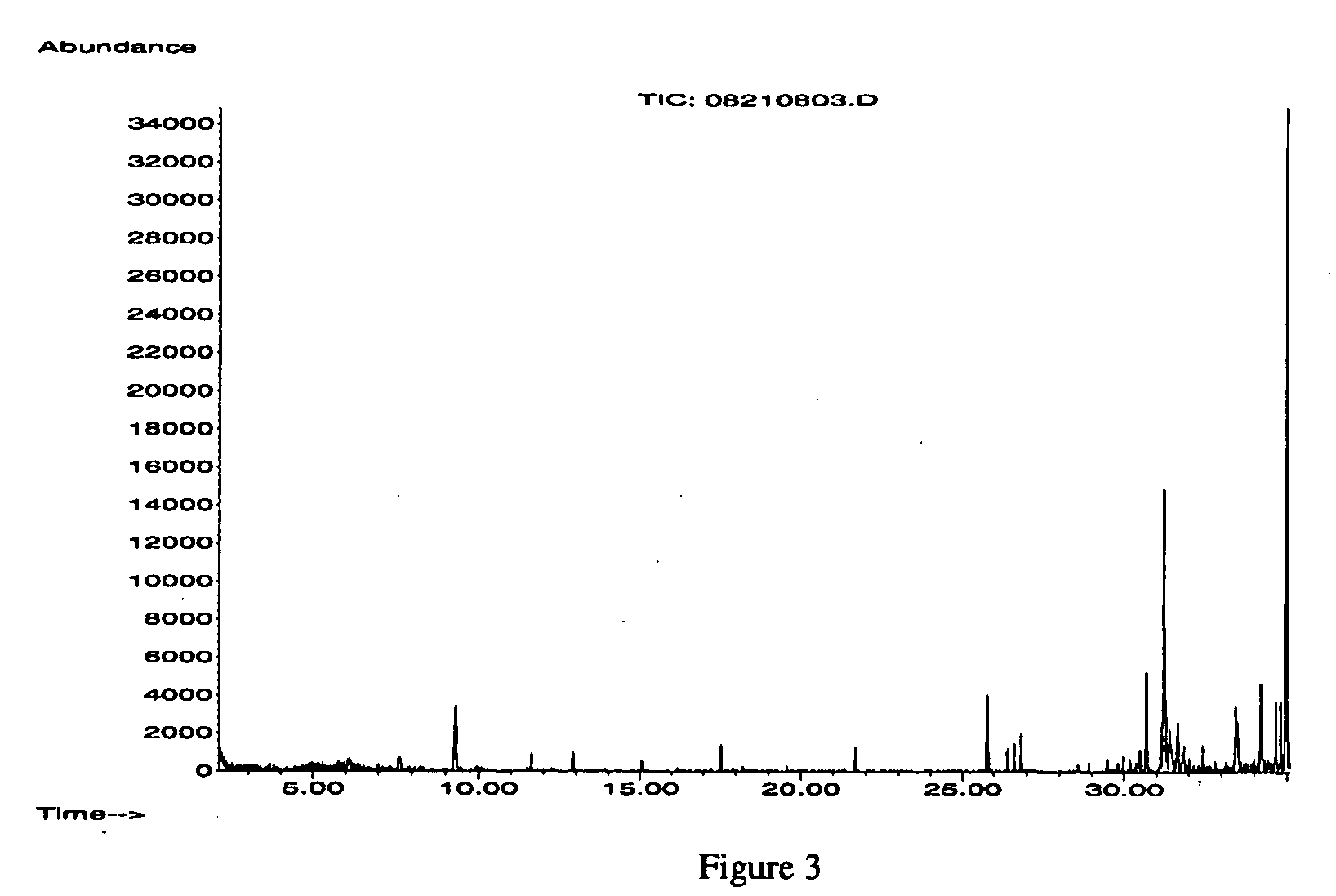Disposable absorbent articles comprising odor controlling materials
a technology of odor control and absorbent articles, which is applied in the direction of bandages, natural mineral layered products, cellulosic plastic layered products, etc., can solve the problems of difficult use and/or disposal of absorbent articles, unsatisfactory experiences for the wearer and caregiver of absorbent articles, and ineffectiveness
- Summary
- Abstract
- Description
- Claims
- Application Information
AI Technical Summary
Benefits of technology
Problems solved by technology
Method used
Image
Examples
example 1
Process for Making a Bleach Activator Co-Particle
[0120]This process is practiced in a food processor (mixer), with a vertical axis-driven impeller having a radial sweep of 8.0 cm. To a 14-speed Osterizer blender is added Sodium Nonanoyloxybenzene sulfonate extrudate (NOBS, Future Fuels Chemical Company) which is ground to a fine powder. In a batch wise process, 200.0 g Sodium Percarbonate (OCI Chemical Corp, Decatur, Ala. under the tradename Provox C) and 10.0 g ground NOBS are combined and blended together in an Osterizer blender for 30 seconds. Next, the Sodium Percarbonate / NOBS mixture (205.0 g) is vigorously mixed with 205.0 g of molten PEG 4600 in a preheated beaker (80° C.) for about 30 seconds. The viscous molten material is then poured onto a strip of aluminum foil (or may alternatively be poured into a plastic Ziploc bag) and, using spatula, spread out into a thin layer. The ends of the aluminum foil are folded over (or the Ziploc bag is closed) to seal the material inside ...
example 2
Process for Making a Bleach Activator Particle
[0121]This process is practiced in a Bella XL-32 paddle mixer (Dynamic Air, St. Paul Minn.). This example describes a process to making a bleach activator particle with a 10% loading level of bleach activator, such as Nonanoyloxybenzene sulfonate. Twenty-four kilograms of the core anhydrous sodium sulfate material (Mallinckrodt Baker, Product 8024, 10-60 Mesh) is loaded into the mixer. The mixer is started, using a paddle tip speed of 2.1 m / s. At an elapsed time of 10 seconds, 1.2 kg of binder (Acusol 445N, Rolm and Haas, diluted with water to a solids concentration of about 36%) is begun to be added to the mixer, continuing at a rate of 400 g / minute via top-spray atomization on the center fluidized zone. At an elapsed time of 30 seconds, 3.0 kg of bleach activator powder (Nonanoyloxybenzene sulfonate powder, Future Fuels Chemical Company) is begun to be added to the mixer at a rate of 1.5 kg / minute. At an elapsed time of 78 seconds, 1.8...
example 3
Process for Making a Multiple Particle Bleach Activator System
[0122]To 20.0 grams of Sodium Percarbonate (ECOX-C, Kemira Kemi AB) is added 10.0 grams of bleach activator particle as described in Example 2 and the material is gently mixed. To determine the relative mole ratio of peroxide:bleach activator in the multiple particle bleach activator system, the weight and number of moles of peroxide and bleach activator in a given weight of sample needs to be determined. For peroxide, 0.300 g of the multiple particle bleach activator system is dissolved in 4 L of distilled water and after 30 minutes, the concentration of peroxide is determined using the Reflectoquant Peroxide Test. The analysis is performed in triplicate and the average peroxide concentration determined (Measured—15.53 mg / L; Theoretical—15.43). The weight of peroxide in the solution is determined by multiplying the average peroxide concentration by the volume of water (4 L) the bleach activator system is dissolved in. Fo...
PUM
| Property | Measurement | Unit |
|---|---|---|
| Percent by mass | aaaaa | aaaaa |
| Mass | aaaaa | aaaaa |
| Mass | aaaaa | aaaaa |
Abstract
Description
Claims
Application Information
 Login to View More
Login to View More - R&D
- Intellectual Property
- Life Sciences
- Materials
- Tech Scout
- Unparalleled Data Quality
- Higher Quality Content
- 60% Fewer Hallucinations
Browse by: Latest US Patents, China's latest patents, Technical Efficacy Thesaurus, Application Domain, Technology Topic, Popular Technical Reports.
© 2025 PatSnap. All rights reserved.Legal|Privacy policy|Modern Slavery Act Transparency Statement|Sitemap|About US| Contact US: help@patsnap.com



